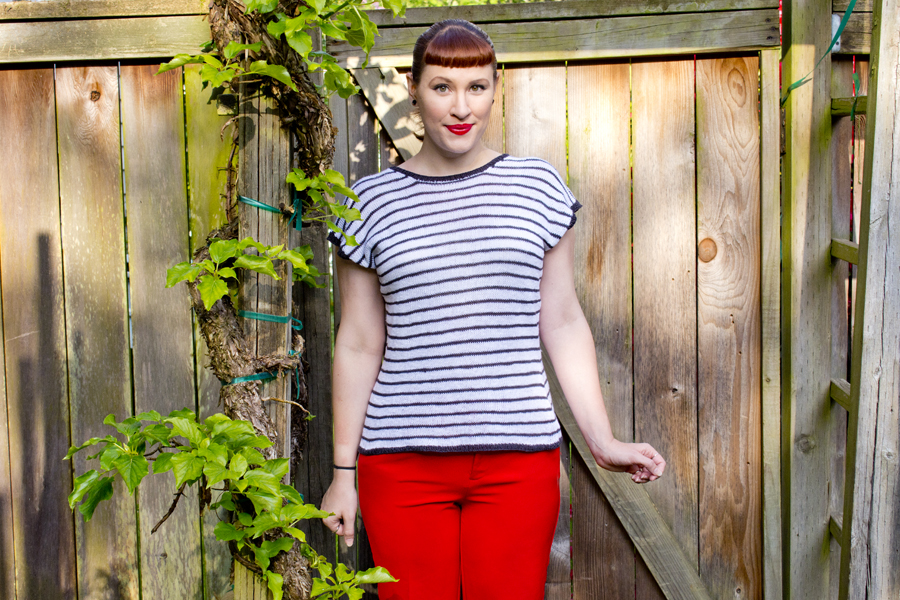
The simple shape of my new linen top pattern Waters opens up a lot of possibility for customization. The pattern features a two-color stripe sequence with a 1:3 ratio over 8 rows/rounds, and the stripe sequence can be easily swapped out for other ratios, color combinations, and textures. Here are five alternative stripe sequences and the approximate yardage requirements, plus some tips for creating your own stripes sequence.
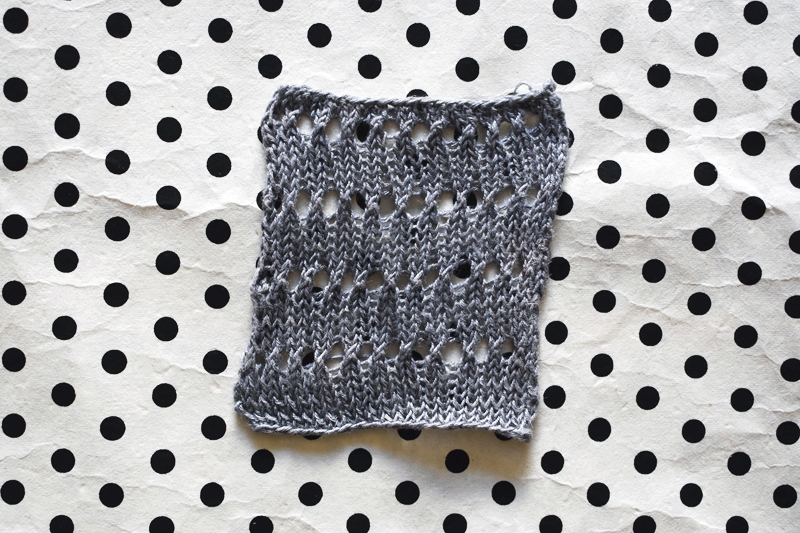
1. Eyelet Stripes
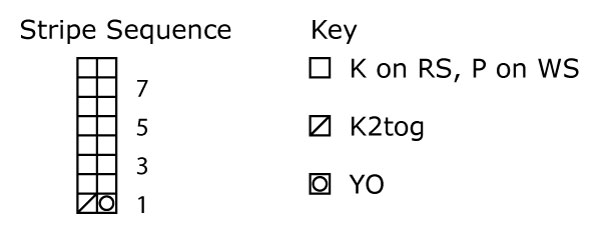
Make your top extra light and airy by replacing the colored stripes with stripes of eyelets. When working eyelet stripes, you’ll need a plain stockinette selvage on each edge while working flat so you can easily add increases and pick up stitches. Start with two stockinette stitches, work the Eyelet Stripes to the last one or two stitches, and work the final one or two stitches in stockinette.
This textured stripe may affect your gauge, so you should swatch using this stitch pattern instead of stockinette. If waist or hip shaping falls on an eyelet round, work eyelets as they fit, switching to stockinette around the increases or decreases at each side. When you resume working eyelets after working some stitches in stockinette, make sure that the eyelets line up with the eyelets in previous rows/rounds.
You’ll need roughly 780 (870, 960, 1050, 1140, 1230, 1320) yds of Quince & Co. Sparrow.
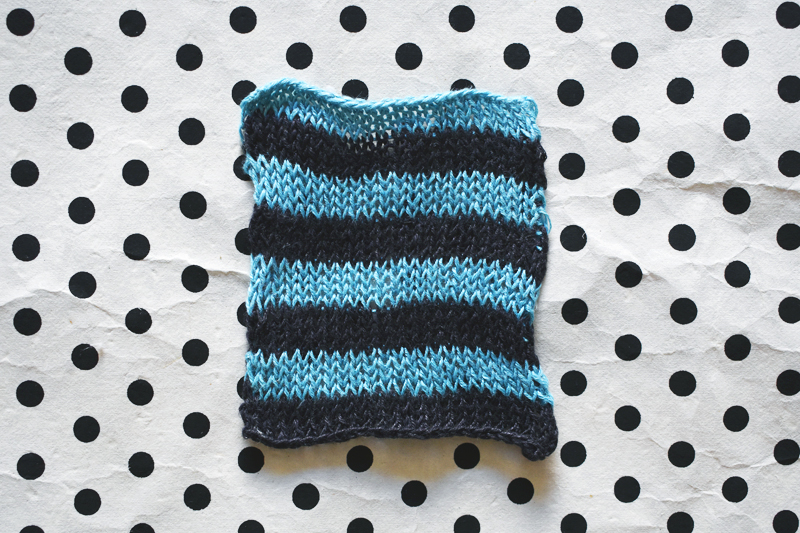
2. Equal Two-Color Stripes
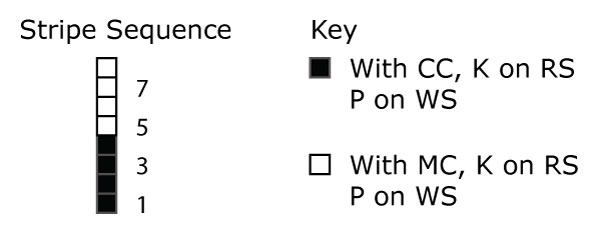
Equal stripes always feel a bit more playful to me than other styles of stripes. They’re chunky and fun. You can substitute this stripe sequence for the original stripe sequence without having to make any extra considerations.
You’ll need roughly of 345 (385, 425, 465, 505, 545, 585) yds Quince & Co. Sparrow in MC, and 435 (485, 535, 585, 635, 685, 735) yds in CC. CC is used for the edgings and requires more yardage.

3. Reverse Stockinette Stripes
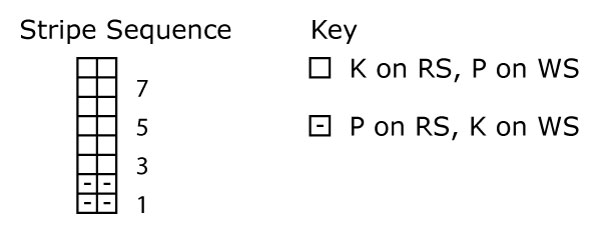
Create stripes of texture without any fuss using reverse stockinette. This adds interest to a solid colored top without making it more revealing, and the sheen of linen plays nicely with different textures.
This textured stripe may affect your gauge, so you should swatch using this stitch pattern instead of stockinette. If a reverse stockinette row/round falls on a shaping row/round, work increases as m1 pwise, and work decreases as p2tog and ssp.
You’ll need roughly 780 (870, 960, 1050, 1140, 1230, 1320) yds of Quince & Co. Sparrow.
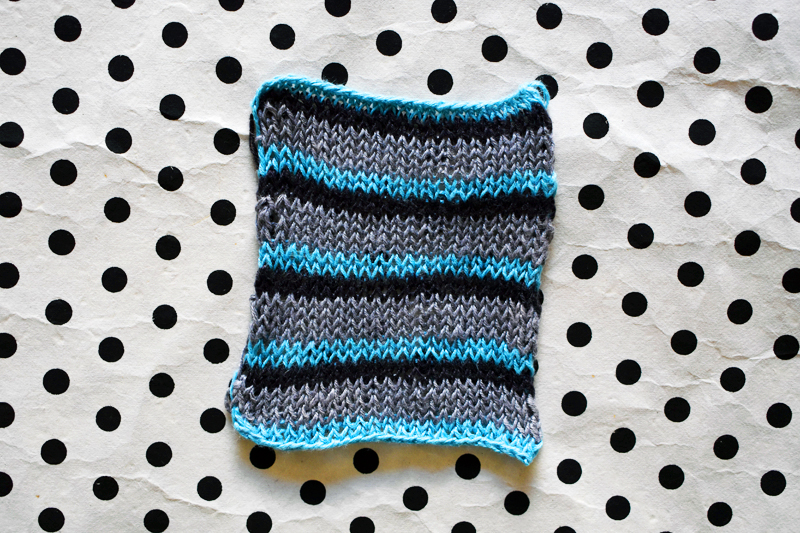
4. Three-Color Stripes
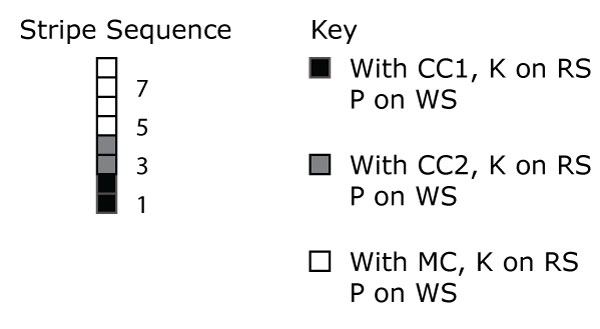
Throw in some extra color to spice things up with a three-color stripe. Like the Equal Two-Color stripe, this one doesn’t require any changes other than to the colors used.
You’ll need roughly of 345 (385, 425, 465, 505, 545, 585) yds Quince & Co. Sparrow in MC, 260 (290, 320, 350, 380, 410, 440) yds in CC1, and 185 (205, 225, 245, 265, 285, 305) yds of CC2. CC1 is used for the edgings and requires more yardage.
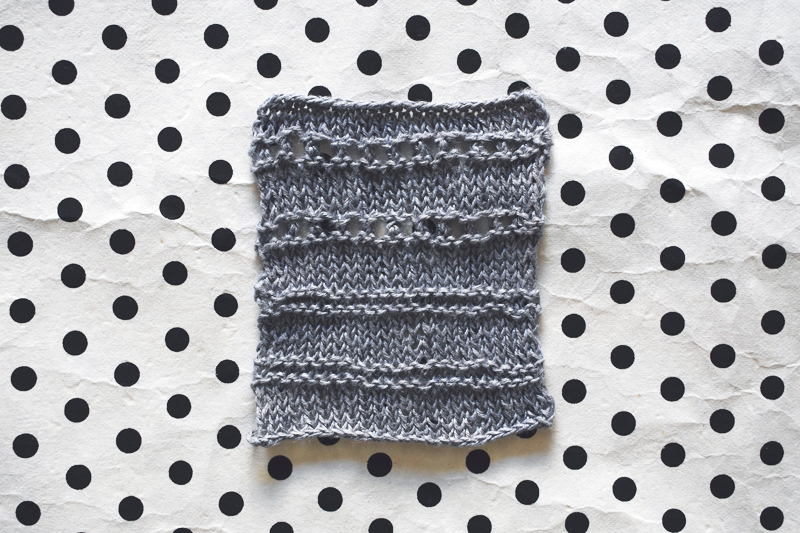
5. Garter and Eyelet Stripes
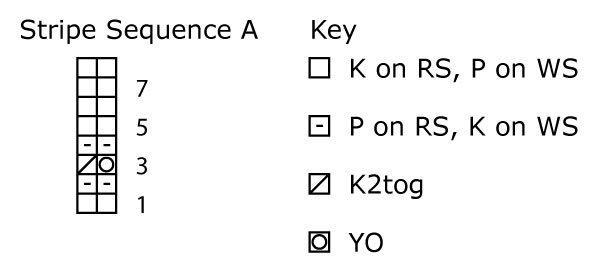

I admit that this is kind of a mashup or options 1 and 3, but Garter and Eyelet Stripes are alternative stripe sequences that I might use for my OAL pattern if I find a multicolor fabric for my shorts and want a solid colored top, so I threw it in here.
If I choose this one, I’ll work Stripe Sequence A for the first 5-7 stripe sequences, and then I’ll work the remainder in the Stripe Sequence B, so that I won’t have to wear a camisole with my top. You could also work all of one or the other.
This textured stripe may affect your gauge, so you should swatch using this stitch pattern instead of stockinette. The same selvage requirement for Eyelet Stripe that is described above and the same alternative increases and decreases described for the Reverse Stockinette Stripes will apply to this stitch pattern.
You’ll need roughly 780 (870, 960, 1050, 1140, 1230, 1320) yds of Quince & Co. Sparrow.
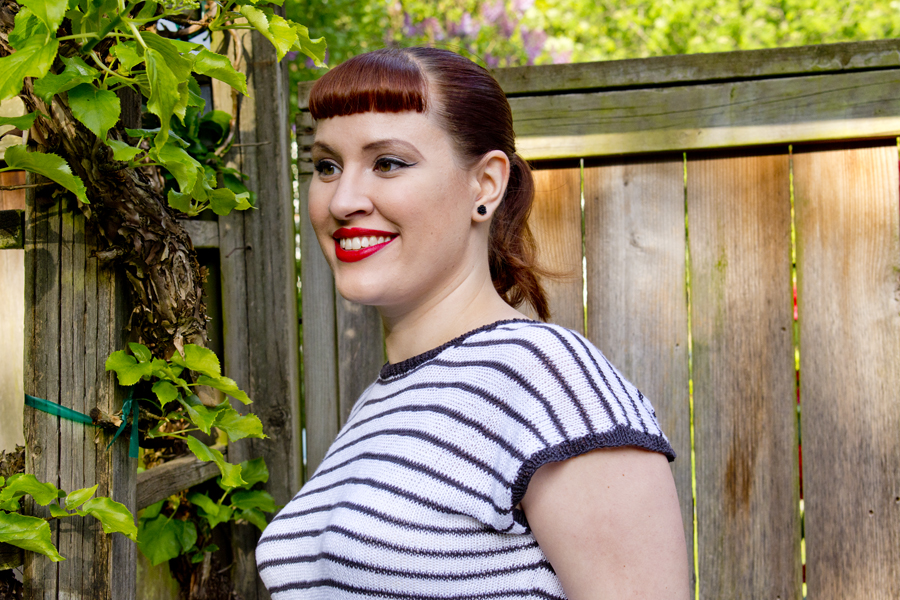
6. Create Your Own
Waters is designed around using an 8 row/round stripe sequence, so that’s the easiest length to work with when creating your own. If you want to use a different increment, be sure to double check where your sequence will hit on cast-on rows and for the final stripe sequence at the hem.
Because part of Waters is knit flat, stripes that are an even number of rows work best if you’re working colored stripes so you can carry your yarn. If you work stripes that are an odd number of rows, you will need to cut your yarn at the end of every stripe and weave in the ends until you get to working in the round.
If you choose to create a textured or lace stripe, be sure to plan ahead so you know how you will handle shaping, and don’t forget to swatch in your new stitch pattern instead of stockinette, so your top ends up the right size.
Leave a Reply